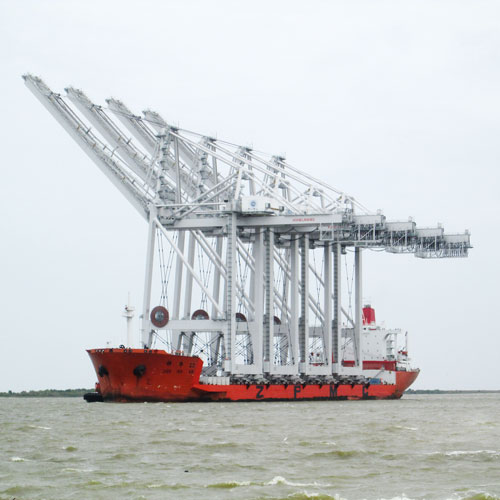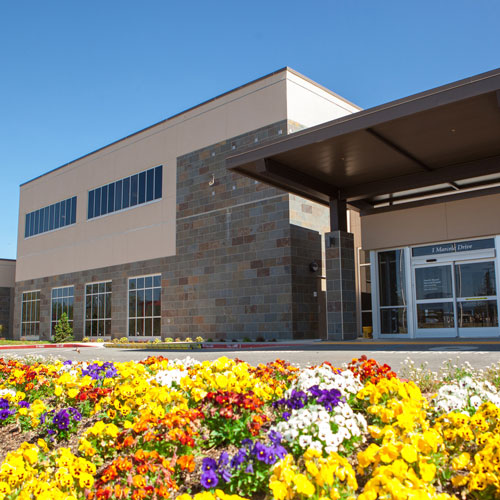To say that RegionalCare Hospital Partners took on a challenge in building the Canyon Vista Medical Center would be an understatement. In addition to all the standard logistics that went into building the new center, there was also the accelerated time frame and the actual size of the hospital, which was to be twice the size of the facility it was replacing. Keith Allen, vice president of construction and real estate for RegionalCare, is certainly accustomed to demanding builds, but completing Canyon Vista in Sierra Vista, Arizona, was a project that offered many lessons.
RegionalCare formed in 2009 with the intention to acquire hospitals in smaller cities or rural areas. For Allen, the upsides his company offers are apparent: improving a local hospital’s service by providing access to capital and allowing local management to maintain day-to-day operations. Currently, RegionalCare has nine hospitals in eight different states in its portfolio, including three acquired after a merger with Essent Healthcare in 2011.

Canyon Vista occupies 74 acres of a medical campus and has 100 private patient rooms. The initial mock-up efforts for the center showcased spaces that provided patients with comfort, proximity to the medical staff, and a positive healing environment. “We had some good interaction with the city and with the community in creating a hospital that complemented the environment and provided spaces that met the needs for the patients, nursing staff, and the physicians,” Allen says.
He believes the smooth building process was greatly enhanced by partnering early on with the project’s architect, Gould Turner Group, and its construction company, JE Dunn Construction. “While we still negotiate fees and have a competitive spirit, we find it to be very helpful to use firms that know us and [where] there’s a mutual respect and understanding,” Allen says.
Gould Turner produced conceptual designs early, and those illustrations were brought to the partners of the hospital’s foundation and board. A construction advisory committee consulting with those board members also offered some “checks and balances” to allow for any requests or needs that were deemed necessary.
The timeline for Canyon Vista was aggressive. RegionalCare took over operation May 1, 2013, and it took just two years to deliver the new hospital in a condition where it was ready to see patients. A 16-month time frame was allotted for the actual construction. “It [was] a pretty aggressive timeline, and we’re pretty proud of that,” Allen says.
The serene setting of Canyon Vista, just 10 miles from the Mexican border, evoked the spirit of the old Western town of Tombstone, but that remote location also “added a layer of complexity,” according to Allen. The project actually began well before the area’s famed monsoon season, but during a two-month period, there was more than 24 inches of rain. The remoteness also prompted various labor issues, such as actually being able to get workers to the site.

Working with JE Dunn Construction, however, was quite beneficial for Allen and his team. The company had a Phoenix office with a staff of key individuals who were familiar the area. “We could trust that the local hospital leadership would enjoy working with them,” Allen says. Since JE Dunn also had a location in Nashville, RegionalCare’s base of operations, the two could communicate easily.
Another key organization that made Canyon Vista possible was Realty Trust Group, a real estate advisory group. According to Scott Evans, the organization’s executive vice president, Realty Trust Group really worked as a “strategic advisor” for the medical office building. Evans and his team were crucial in making sure all parties involved with Canyon Vista were on the same page.
Working with all the parties behind the project, Realty Trust Group ensured that everyone was focused on that timeline. Since Realty Trust Group is experienced in this type of work, it served as a key communicator to the senior management for the hospital. Ultimately, Evans believes that the accelerated timeline was an advantage. “It really drove the process and forced us to make sure that we were very focused in [on that deadline] that we laid out for the hospital and then for the developers that we were working with,” he says.
The official ribbon cutting for the grand opening of Canyon Vista occurred April 7, 2015. Though it was outside the strict design and construction aspect of the project, one rewarding part of Canyon Vista that Allen took part in was working on the artwork inside the center. No stock photography was going to be in Canyon Vista, and since there were such a high number of artists living in the area, they called on the community to submit artwork. With more than 700 pieces submitted, it took an art-selection committee to decide what would ultimately go into the hospital. A dedication to the artists featured in Canyon Vista was one of the first activities at the grand opening.


